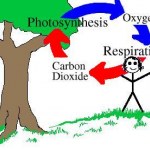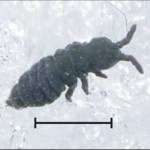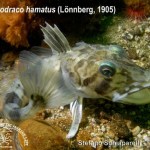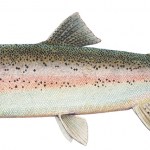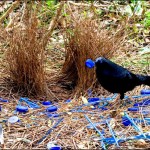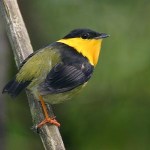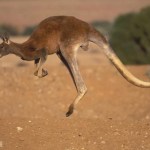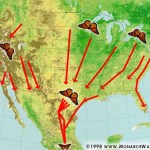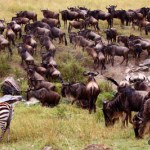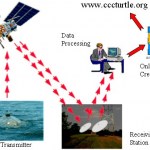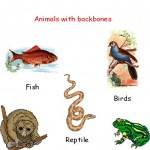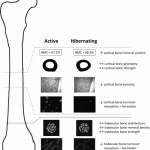
Image source: http://water.me.vccs.edu/concepts/oxycycle.html
Humans need to inhale oxygen to support life. We also need to get rid of carbon dioxide, a byproduct of metabolism. Living in environments with very little oxygen (hypoxia) or very high carbon dioxide (hypercapnia) levels can be life-threatening for humans. This is because a build-up of carbon dioxide in our bodies results in acidosis, which can be fatal if the excess carbon dioxide cannot be disposed of. Life in an oxygen barren anoxic environment is lethal to humans as we rely on oxygen to sustain our metabolism and keep our…
You may recall the previous post on the seminar that I attended on Comparative Physiology of Brown Adipose Tissue at the Experimental Biology meeting last week.
Here are some of the comparative physiology abstracts that were presented at the meeting on this topic:
-Dr. Michael Symonds and colleagues from the The University of Nottingham, United Kingdom, presented "The Use of Thermal Imaging of Brown Adipose Tissue in the Supraclavicular Region as a Repeatable Technique to Quantify its Function in Humans." Dr. Symonds presented data showing that the temperature of the brown adipose tissue in…
Day 5 - Wednesday
I am sitting at the airport waiting to board my flight back home from the meeting. This was an excellent year at EB for comparative physiology! There were so many wonderful sessions that it was often difficult choosing which to attend. While there were no designated comparative physiology symposia today, there were many sessions that would be of interest to a comparative physiologist. Here are the ones that I attended:
-The first session was on "Vascular Adaptation to Exercise in Atherosclerosis." There were many talks in this session that were relevant to a comparative…
Day 4 - Tuesday
Dr. August Krogh is considered to be the founder of comparative physiology. We talked about the August Krogh Principle in my first entry. This principle states that ""for many problems there is an animal on which it can be most conveniently studied." Dr. Krogh recognized that many animals have unique natural adaptations that we can learn from, like the hibernating animals we talked about yesterday.
This morning I attended an excellent lecture given by this year's August Krogh Distinguished lectureship awardee, Dr. Gerald L. Kooyman, Professor Emeritus, Scripps Institution of…
Day 3- Monday!
Today was a great day for Comparative Physiology!!
I highly enjoyed both symposia offered by the Comparative and Evolutionary Physiology Section of the American Physiological Society.
-The first was entitled: "Elucidating Nature's Solutions to Human Diseases." In this symposium, Dr. Barbara Horwitz, University of California at Davis, discussed how hibernating animals protect their nervous system.
-The second talk was given by Dr. Sandy L. Martin, University of Colorado School of Medicine. Her talk was titled: "Biomarkers for the two phase switches of hibernation."
If only…
Day 2-Sunday
The comparative physiology seminars and posters are all being presented today (Monday) and tomorrow. Since there will be a comparative physiology symposium today on fuel utililization and energy metabolism, I decided to attend the symposium held yesterday morning on energy metabolism and how it relates to the pathology, treatment and prevention of obesity and diabetes. This was a fantastic session that provided much information on how changes in energy metabolism impacts human health. Leading researchers in this field who gave presentations were:
-Christopher Newgard, Duke…
Day 1 (Saturday) of the meeting was nothing short of exciting!!
The only problem with these large meetings is that there are multiple interesting seminars occurring simultaneously. How to choose???
The first symposium that I attended was on Translational Research. This area of research seeks to apply discoveries in the laboratory or field to the development of studies in humans. The first talk was on the evolving landscape for medical innovation given by K. Kaitin from Tufts University followed by a talk on finding the right animal models for translational research given by S. Prabhakar…
I am packing my bags and my posters for the upcoming Experimental Biology Conference in Washington DC. My flight leaves tomorrow and I cannot wait to see the many posters and seminars on comparative physiology! This has to be one of my favorite conferences. I will be sure to write from the meeting and keep you up-to-date on current research in this exciting field. Stay tuned...
Icefish are not the only "cool" animal out there. It turns out there are actually quite a few species that are resistant to freezing. Here is a brief list of some of my favorites:
Snow Fleas:
These fleas produce a glycine-rich antifreeze protein which differs from other insects suggesting that this was an independent adaptation to freezing (Source: Graham LA, Davies PL. (2005) Glycine-rich antifreeze proteins from snow fleas. Science. 310:461). Scientists have created a synthetic version of this protein that you can read about here.
Wood Frogs:
Professor Ken Storey at Carleton University…
Hemoglobin is a protein within mammalian red blood cells that transports oxygen for delivery to tissues throughout the body.
Antarctic icefish (Channichthyidae), like the crocodile icefish pictured above, are quite unique in being reportedly the only vertebrate that does not have circulating hemoglobin. In fact, their blood is almost transparent because of the lack of red blood cells. This translates into an ability to carry only 1/10 the amount of oxygen as red-blooded fish. In addition, not all members of the Channichthyidae family have myoglobin (which is what binds oxygen in muscle…
Inflammation has the potential to be both beneficial and harmful. It is beneficial when the body uses it to help fight infections or help heal an injury. But inflammation can get out of control in some diseases and can actually become harmful resulting in insulin resistance and a host of other pathologies.
Researchers have now shown that rainbow trout muscle cells actually increase their uptake of sugar in response to the inflammatory signal tumor necrosis factor alpha (TNFa). These findings mean that inflammation can significantly alter the metabolism of these fish. The figure below (…
Bowerbirds are certainly my favorite examples of animals that build elaborate courtship and mating structures, such as the structure shown below being decorated with blue bottle caps by a male satin bowerbird (image credit: Alan Fear).
Also check out this video clip from the BBC showing bowerbirds in the midst of decorating.
Home decorating may not be simply for mate attraction and courtship, however. A recent study of black kites (Milvus migrans) a species of raptor, shows evidence for increased offspring survival with highly decorated nests. In black kites, breeding is usually controlled…
Breath analyses are not just for drunk drivers. A form of a breath test that measures stable isotopes (as opposed to radioactive isotopes) of carbon can be used to determine which fuel animals burn to supply various energetic needs. This is possible because as various fuels are metabolized, they create carbon dioxide that is exhaled as a waste product. Measurement of the stable isotope ratio of carbon-13 in the breath tells researchers which fuel was burned in the body. This type of a test was used to determine what fuels bats utilize to support the energetic needs of flight.
To establish a…
Elaborate courtship displays in birds are not uncommon and can be as simple as having fancy plumage to performing acrobatic acts to try to attract birds of the opposite gender. In male birds, testosterone binding to androgen receptors is a driving force for these courtship displays. It was unknown, however, whether testosterone is able to directly act on muscle tissues.
Researchers Feng et al., studied the expression pattern of the androgen receptors in the muscles of golden-collared manakins, a bird with very athletic courtship behaviors as seen in this video. They compared the manakins to…
Negative pressure is created in the lungs by lowering the diaphragm and expanding the ribcage, a mechanism used to draw air into the lungs (called inspiration). This is possible because air follows a pressure gradient moving from an area of higher pressure (atmospheric air) to an area of lower pressure (the air sacs of the lungs (i.e. the intraalveolar space)). A diagram of this process is shown below.
As the diaphragm relaxes and the ribs return to their resting position, the pressure within the lungs becomes greater than the atmospheric pressure outside the body resulting in passive…
Here are highlights of my favorite animals that migrate by air:
Bugs:
Monarch Butterflies: How in the world does this little insect travel so far?? These butterflies migrate very long distances to wintering grounds on the west coast of the United States or in Mexico. You must watch this video clip of these amazing insects.
Bats:
A recent study conducted by Dr. Bisson et al., showed that migratory behavior arose independently in several species of bats to meet the need of finding food and water. This recent behavior of bats is more prominent among animals that roost in trees compared to those…
I LOVE National Geographic!! They have so many beautiful video clips of great animal migrations that I could just sit down with a bowl of popcorn and watch them all day.
Here are some highlights of my favorite land animals that migrate:
In Africa, wildebeests (shown in the image above) are perhaps the most well-known migratory mammal. Check out this video clip from National Geographic which talks about their migration.
The largest land mammal that migrates is the elephant (image below from National Geographic). In Mali they migrate over 300 miles to find food and water along long corridors…
Satellite telemetry is a widely used tool to track the migration routes of numerous animals. Previously, sea turtles have been mainly studied while nesting on beaches, but these observations do little to inform scientists of what these animals are doing the majority of their time, which is spent away from their nests. Satellite imagery has allowed researchers to monitor the activity of these animals in the open ocean (image below from the Sea Turtle Conservancy). Data collected using this technique have shown that sea turtles will travel hundreds to thousands of miles between nesting beaches…
The status of the world's vertebrates and conservation efforts were recently published in an article from Science Magazine. The study looked at various data covering the taxonomy, distribution, population, and threat status for 25,780 species of vertebrates (mammals, birds, amphibians, reptiles, cartilaginous and bony fish). Also included in the analyses were potential threats to the species as well as conservation efforts. Species were categorized using a standard called the Red List set by the International Union for Conservation and Nature (IUCN). Threatened species include those in the…
This winter really made me think hibernating animals had the right idea. I'd love to just sleep away the six-month cold front, and wake up as refreshed as ever. Now, as great as that sounds, there are a few minor things I'd have to worry about - you know, my heart stopping, bone loss, small things like that. I'm jealous of bears because they don't have to worry about any of that; they have so many cool adaptations that allow them to hibernate!
Let's start with their hearts. A recent study published in Physiological and Biochemical Zoology explains changes in Grizzly bear hearts as they…
